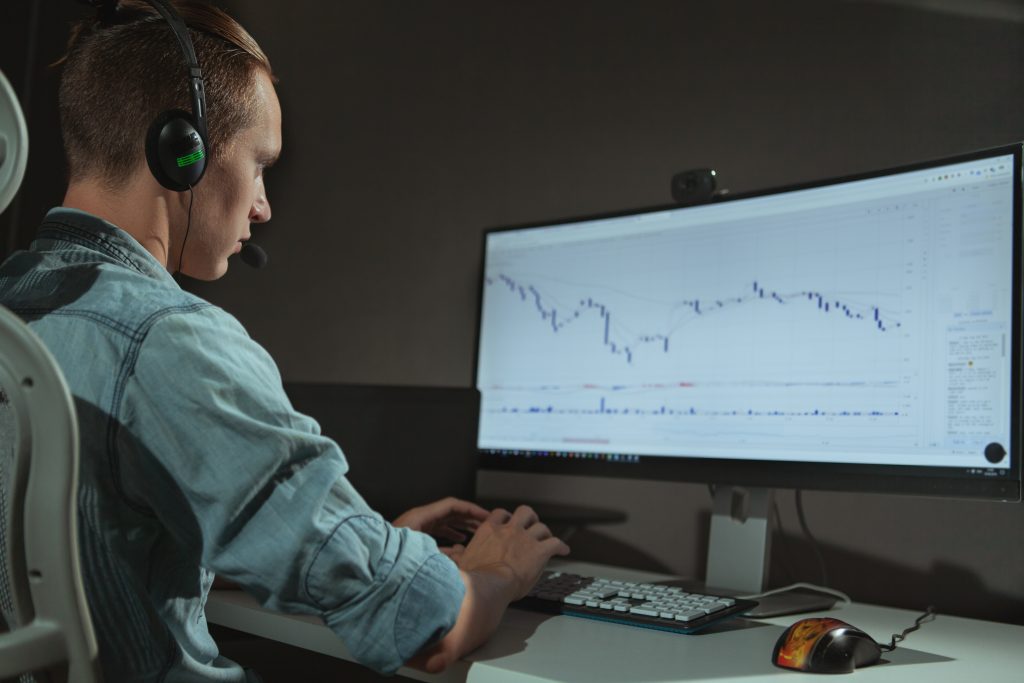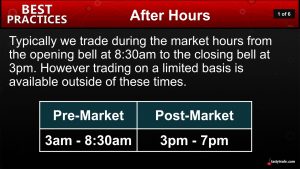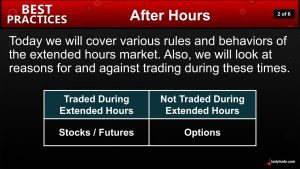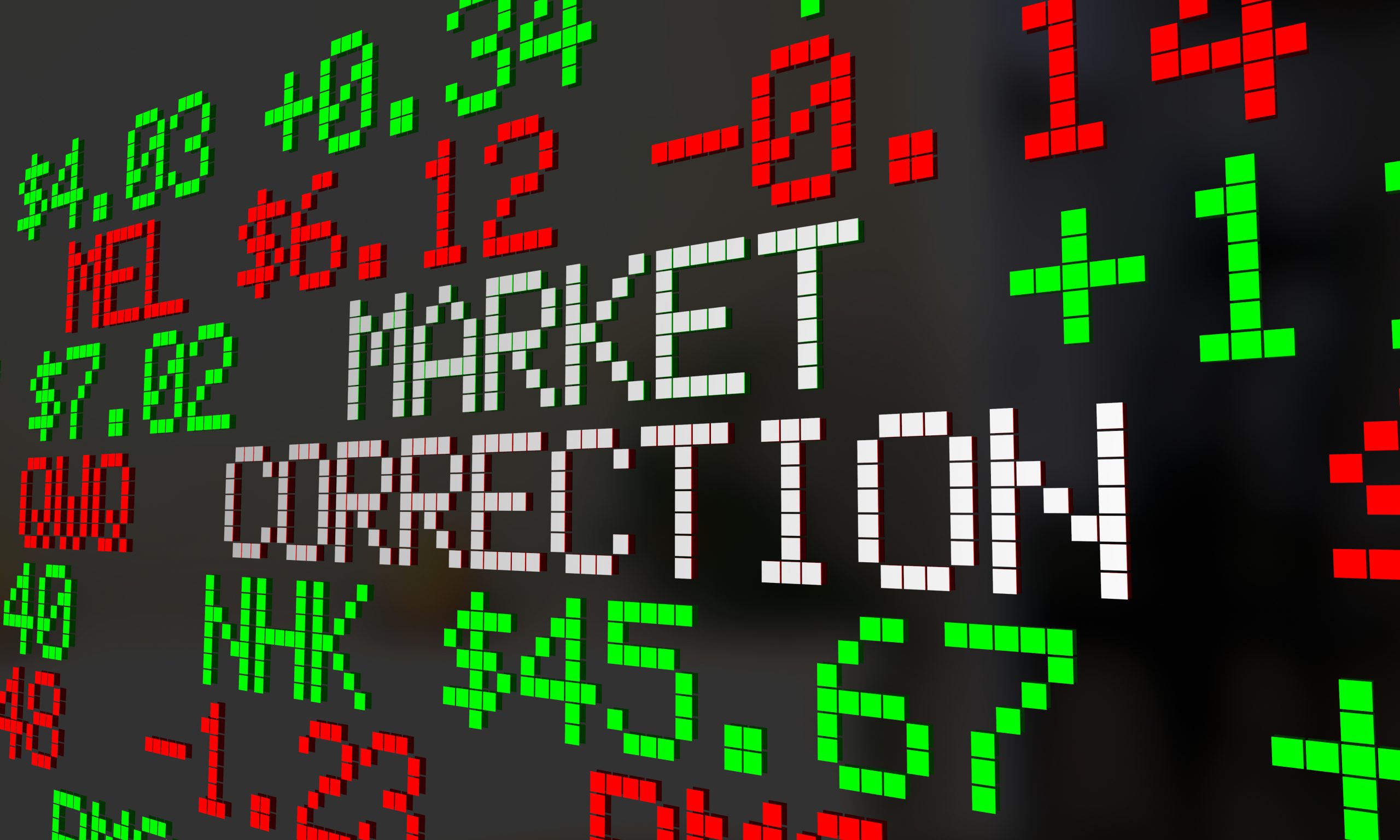Pre-Market and Post-Market Trading
The pre-market and post-market trading sessions offer investors and traders extended access to equities and futures markets, but often with suboptimal liquidity.

In the United States, investors and traders can access the stock market not only during the regular daytime trading hours but also during the pre-market and post-market.
However, market participants that elect to trade during these extra sessions should be aware that the market dynamics during these periods can differ significantly from the regular daytime session.
As most are aware, the normal daytime trading session for stocks is conducted weekdays from 8:30 a.m. to 3 p.m. Central Standard Time (CST). This period is officially bracketed by the “opening bell” in the morning and the “closing bell” in the afternoon.
Beyond normal trading hours, the stock market also offers pre-market and post-market trading sessions. The pre-market session opens at 3 a.m. and runs until 8:30am CST, while the post-market session (aka “after-hours session”) runs from 3 p.m. to 7 p.m. CST.

Importantly, the dynamics of the pre-market and post-market sessions can differ greatly from the regular daytime session, and one of the most important considerations is liquidity—or lack thereof.
Liquidity in the financial markets is defined as the ability to easily convert an asset into cash without significantly affecting the associated market price of that asset. A high degree of liquidity helps ensure that pricing in a given market is as efficient as possible.
Unfortunately, the pre-market and post-market trading sessions frequently offer sub-optimal liquidity. That means, in short, that executing trades during these sessions can significantly affect prices.
In general, that means an investor or trader attempting to execute an order outside the regular daytime session may not be able to complete their entire order at the posted bid/offer prices, and therefore be forced to accept a suboptimal price (sometimes significantly) to complete the order.
This occurs because suboptimal market liquidity typically results in a widening of the “bid-ask spread.”
The bid-ask spread is defined as the difference between the bid price and ask price for a given security. The efficiency of the bid-ask spread is highly dependent on liquidity—meaning that robust liquidity typically results in a tighter spread.
Investors and traders care about the bid-ask spread because their goal is to buy at the lowest price possible, and sell at the highest price possible, and that situation requires the tightest bid-ask spread possible.
As a result, the loosening of bid-ask spreads—which can be dramatic in the pre-market and post-market sessions—often serves as a deterrent to participation during those periods.
For example, imagine that during the regular trading hours, hypothetical stock XYZ is trading with an extremely tight bid-ask spread on robust liquidity. If stock XYZ opens the regular day trading session at $10.00/share, that means a market participant might be able to purchase 100 shares of XYZ for $10.01, or sell 100 shares for $9.99/share.
However, in contrast, the bid-ask spread in hypothetical stock XYZ could widen by as much as $0.50 (or much more) during the pre-market or post-market trading sessions.
Using the same example, that would mean that a buyer of XYZ stock would theoretically need to pay as much as $10.50 for those shares, or to sell XYZ stock for as little as $9.50—significantly “worse” pricing as compared to the regular daytime session.
But one also can’t overlook the fact that the news cycle is 24 hours a day and 7 days a week, whereas the regular daytime trading session is open only from 8:30 a.m. to 3 p.m. CST.
That means significant news developments can be released outside regular trading hours. Gap moves may therefore occur outside the daytime session, which an investor or trader might feel compelled to act upon.
For example, if news affecting hypothetical stock XYZ broke during the after-hours session and the stock jumped to $20.00/share from $10.00/share, an investor/trader in XYZ might want to execute at those levels—depending on his or her exact position and outlook.
In that scenario, the existence of pre-market and post-market trading sessions might be viewed as a positive—even with suboptimal liquidity.
Investors and traders should note that outside regular trading hours the order types accepted by the system are also limited. That means market orders and stop orders can’t be entered. Instead, market participants need to select the extended hours limit order option (aka EXT limit).
In terms of other securities, equity options exchanges are not open outside of the regular daytime trading session, which means options-related transactions cannot be executed during the pre-market and post-market sessions.
Futures, on the other hand, do typically offer pre-market and post-market trading sessions.
Market participants involved in futures should familiarize themselves with the complete trading hours for a given futures market prior to entering a position, as the regular, pre-market and post-market hours can vary across futures products.

Clearly, the pre-market and post-market trading sessions do offer investors and traders a supplementary opportunity to execute transactions outside the regular daytime trading hours, and in certain instances, that opportunity may be valuable.
However, market participants do need to be keenly aware of the varying dynamics of the pre-market and post-market sessions, as compared to the regular session.
To learn more about this topic, readers may want to review a new installment of Best Practices on the tastytrade financial network.
For updates on everything moving the markets, readers can also tune into TASTYTRADE LIVE—weekdays from 7 a.m. to 4 p.m. CST—at their convenience.
Sage Anderson is a pseudonym. He’s an experienced trader of equity derivatives and has managed volatility-based portfolios as a former prop trading firm employee. He’s not an employee of Luckbox, tastytrade or any affiliated companies. Readers can direct questions about this blog or other trading-related subjects, to support@luckboxmagazine.com.



















